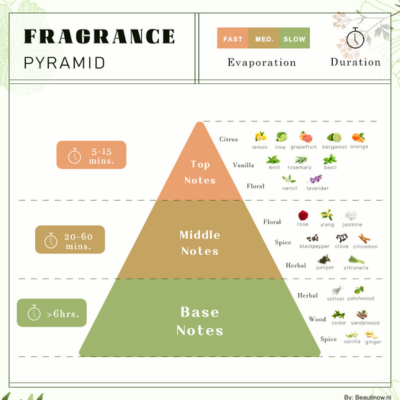Beyond Notes: Fragrance Insights
Exploring Fragrance Complexity

Fragrance notes are the aromatic components that make up a perfume's scent profile. These notes can be divided into three categories: top notes, heart notes (or middle notes), and base notes.
Single Notes
Fragrance notes are the aromatic components that make up a perfume's scent profile. These notes can be divided into three categories: top notes, heart notes (or middle notes), and base notes.
Accords
Perfumers create harmonious blends called "accords" by combining different fragrance notes. Common accords include floral, oriental, and woody. These accords define the overall character and style of a fragrance.
Fragrance Families
Fragrances are categorized into families or groups based on their predominant notes and characteristics. Common perfume families include floral, citrus, woody, oriental, and fresh and each Family has its unique appeal and mood.
Note Pyramid
The combination of top, heart, and base notes forms a "note pyramid" that unfolds over time. This pyramid structure creates a dynamic and evolving fragrance experience, with different notes taking center stage at different times.

Blending
Perfumers carefully select and blend fragrance notes to create a balanced and harmonious scent profile. The art of blending involves experimenting with various combinations to achieve the desired olfactory effect.
Personal Preference
Fragrance notes are subjective, and personal preference plays a significant role in choosing a scent. What smells pleasant to one person may not appeal to another, making fragrance selection a highly individual choice.
Occasions
Different fragrance notes are suitable for various occasions and seasons. Light, fresh notes are often chosen for daytime and warm weather, while richer, spicier notes are favored for evenings and colder seasons.